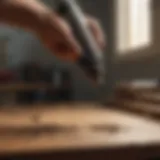Mastering the Art of Crystal Bonding: A Comprehensive Guide for Rock and Fossil Collectors
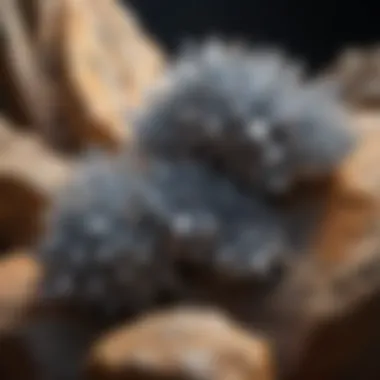

Rock and Fossil Identification
Rock and fossil identification is a crucial aspect of the collecting process for enthusiasts in the realm of geology. Various types of rocks and fossils abound in nature, each with distinct characteristics that set them apart. When embarking on a collecting journey, it is essential to have a keen eye for detail and a good understanding of the tools required for accurate identification.
Types of Rocks and Fossils
The world of rocks and fossils is vast and diverse, encompassing a multitude of variations. From sedimentary to igneous rocks, and from ammonite fossils to trilobites, the range is extensive. Understanding the distinguishing features of each type is key to differentiating between specimens and appreciating their geological significance.
Characteristics to Look For
In the pursuit of rock and fossil identification, certain characteristics serve as valuable indicators. Factors such as color, texture, hardness, and fossil imprints provide vital clues to the specimen's composition and origin. By honing observational skills and knowledge of these traits, collectors can enrich their understanding of the geological world.
Tools for Identification
Accurate identification often relies on utilizing the right tools for the job. Magnifying loupes, rock hammers, and geological maps are just a few examples of equipment that aid in the identification process. These tools empower collectors to conduct thorough examinations and make informed assessments of their findings, contributing to a more precise cataloging of their geological treasures.
Understanding the Importance of Proper Gluing Techniques
In the intricate world of rock and fossil collecting, mastering proper gluing techniques is paramount to preserving and showcasing geological specimens effectively. This section serves as a foundational pillar in our comprehensive guide, highlighting the indispensable role of precise adhesive application in the conservation and aesthetic presentation of crystals. By understanding the nuances of gluing methodologies, collectors can ensure the longevity and integrity of their prized specimens, elevating their display to artistic masterpieces.
Selecting the Right Type of Glue for Various Crystal Structures
Considerations for Transparent Crystals
Transparent crystals present a unique challenge when selecting the appropriate glue due to their clarity and light-transmitting properties. Choosing an adhesive that dries transparent and does not affect the crystal's optical characteristics is essential for maintaining the visual appeal of transparent specimens. Epoxy resins are often the go-to choice for bonding transparent crystals, offering a strong and nearly invisible bond that does not disturb the crystal's inherent beauty.
Adhesive Options for Porous Crystals
Porous crystals demand a specialized adhesive that can penetrate and bond effectively with their uneven surfaces. Cyanoacrylate (super glue) is a popular option for porous crystals, as it creates fast and durable bonds on these challenging surfaces. Its ability to fill microscopic nooks and crannies ensures a secure attachment, preventing potential damage or detachment over time.
Specialized Glues for Delicate or Fragile Crystals
Delicate or fragile crystals necessitate the use of specialized adhesives that provide a gentle yet strong bond without compromising the crystal's structural integrity. UV-curing glues offer a delicate application process accompanied by a rapid bonding mechanism, ideal for fragile crystals that require a light touch during bonding. Their minimal impact on the crystal's fragile composition makes them a preferred choice for intricate and sensitive specimens, safeguarding their beauty without risking damage.
Factors to Evaluate Before Gluing Crystals
Compatibility with Crystal Surface
Choosing a glue that is compatible with the specific surface of the crystal is crucial to ensure a secure and lasting bond. Some crystals have reactive surfaces that may interact negatively with certain adhesives, leading to discoloration or degradation over time. Conducting compatibility tests on a small inconspicuous area before full application is advisable to mitigate potential damage and ensure the adhesive complements the crystal's surface properties.
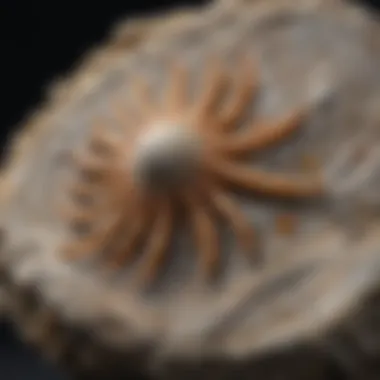

Longevity and Durability of the Bond
The longevity and durability of the bond are essential considerations when selecting a glue for crystals. Opting for adhesives with high tensile and shear strength ensures that the bond withstands external stresses and environmental factors, maintaining the crystal's attachment securely over an extended period. Factors such as humidity, temperature fluctuations, and exposure to light can impact the adhesive's longevity, emphasizing the importance of selecting a suitable glue tailored to the crystal's intended use and display environment.
Impact on Crystal Clarity and Color
The choice of adhesive can significantly influence the crystal's clarity and color, making it imperative to select a glue that enhances rather than detracts from these aesthetic qualities. Transparent adhesives that minimize light refraction and color distortion are ideal for preserving the crystal's natural beauty, allowing its inherent features to shine through unaltered. Additionally, adhesives that resist yellowing or discoloration over time maintain the crystal's appearance, ensuring a timeless and visually appealing presentation.
Preparation Steps for Effective Gluing
Cleaning Crystal Surfaces Thoroughly
Before applying any adhesive, it is essential to clean the crystal surfaces thoroughly to remove dirt, oils, and residues that can interfere with the bonding process. Utilizing gentle solvents or cleaners specifically formulated for crystals helps ensure a pristine bonding surface, allowing the adhesive to adhere effectively and securely. Proper cleaning also promotes a strong bond by eliminating any barriers that may hinder the adhesive's contact with the crystal, enhancing the overall durability and stability of the attachment.
Ensuring Proper Alignment and Support
Achieving proper alignment and support during the gluing process is crucial for ensuring the crystal's correct positioning and stability. Utilizing alignment tools or aids such as specialized jigs or molds can assist in maintaining the crystal's intended orientation while the adhesive sets. Additionally, providing adequate support during the curing phase prevents any shifting or movement that could compromise the integrity of the bond, resulting in a professionally executed and secure attachment.
Applying the Ideal Amount of Adhesive
Applying the correct amount of adhesive is a critical step in establishing a strong and lasting bond between the crystal and substrate. Over-application of glue can result in unsightly residues and interfere with the crystal's visual clarity, while insufficient adhesive may lead to weak bonds susceptible to detachment. Striking a balance between applying enough glue to ensure a robust bond without excess spillage or seepage is key to achieving a seamlessly integrated attachment that accents the crystal's beauty without overshadowing it.
Best Practices for Gluing Crystals to Various Substrates
When it comes to the meticulous art of using glue for crystals in rock and fossil collecting, understanding the best practices for gluing crystals to various substrates is crucial. This section delves into the specific elements, benefits, and considerations regarding this topic, providing rock and fossil collectors with essential insights to preserve and showcase their geological treasures effectively.
Adhering Crystals to Display Bases or Stands
Choosing Suitable Base Materials
Choosing suitable base materials plays a pivotal role in the overall presentation and preservation of crystals. The key characteristic of selecting appropriate base materials lies in their compatibility with the crystals being displayed. Opting for materials that complement the aesthetic qualities of the crystals while providing stability and security is essential. The unique feature of carefully chosen base materials is their ability to enhance the visual appeal of crystals without detracting from their natural beauty.
Securing Crystals without Damaging Surfaces
Securing crystals without damaging surfaces is paramount when adhering them to display bases or stands. The key characteristic here is to achieve a secure bond without compromising the integrity of either the crystals or the surfaces they are mounted on. Using gentle yet effective techniques to secure crystals minimizes the risk of damage, ensuring a long-lasting and visually appealing display. The unique feature of such securement methods is their ability to uphold the presentation of crystals without causing any harm to the surface materials.
Attaching Crystals to Jewelry Settings or Mounts
Optimal Gluing Methods for Jewelry Applications
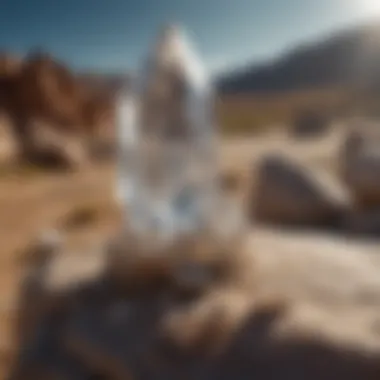

In the realm of crystal jewelry, utilizing optimal gluing methods is fundamental for both functionality and aesthetics. The key characteristic of these methods lies in their ability to withstand daily wear while maintaining a visually pleasing appearance. Opting for adhesive techniques that ensure a strong and durable bond is essential for jewelry applications. The unique feature of such methods is their capacity to securely attach crystals to settings or mounts, enhancing the overall appeal of the jewelry piece.
Ensuring Secure and Aesthetic Attachment
Ensuring secure and aesthetic attachment of crystals to jewelry settings or mounts is a balancing act between functionality and beauty. The key characteristic here is to combine structural integrity with visual finesse, creating a harmonious fusion of form and function. By prioritizing both security and aesthetics in the attachment process, collectors can enjoy jewelry pieces that not only look exquisite but also stand the test of time. The unique feature of this approach is its ability to merge security measures with artistic expression, resulting in captivating crystal-adorned jewelry.
Fixing Crystals in Geode Cavities or Matrix
Techniques for Stabilizing Crystals in Natural Settings
When fixing crystals in geode cavities or matrix, employing stabilizing techniques is essential for preserving both the crystals and their geological context. The key characteristic of these techniques is their ability to secure crystals in natural settings without altering the authenticity of their surroundings. Choosing methods that uphold the integrity of the geological matrix while enhancing the presentation of crystals is paramount. The unique feature of these techniques is their capacity to maintain the natural balance between crystals and their original geological environment.
Preserving Geological Context while Enhancing Presentation
Preserving the geological context while enhancing the presentation of crystals requires a delicate balance between conservation and aesthetics. The key characteristic here is to highlight the natural beauty of crystals within their geological matrix, creating a visually striking display that honors the specimens' origins. By integrating preservation methods with presentation enhancement techniques, collectors can showcase crystals in a manner that respects their geological heritage while maximizing visual appeal. The unique feature of this approach is its ability to narrate the geological story behind each crystal while elevating its visual impact for admirers and enthusiasts alike.
Troubleshooting Common Gluing Challenges and Pitfalls
Troubleshooting common gluing challenges and pitfalls holds significant importance in our in-depth discussion on the art of using glue for crystals in rock and fossil collecting. By exploring this topic, rock and fossil collectors can gain valuable insights into overcoming obstacles that may arise during the bonding process, ensuring the preservation and presentation of their prized geological specimens. Understanding how to troubleshoot common gluing challenges is essential for achieving successful and durable bonds between crystals and substrates, ultimately enhancing the overall aesthetic appeal and longevity of crystal displays.
Dealing with Residues and Stains from Adhesives
Methods for Removing Excess Glue Safely
Discussing the methods for safely removing excess glue is crucial in our comprehensive guide. This aspect contributes significantly to the overall goal of maintaining crystal integrity and clarity. One key characteristic of safe glue removal methods is their ability to effectively eliminate residues without causing damage to the crystals or surrounding surfaces. This gentle yet efficient approach to glue removal ensures that any accidental excess can be rectified without compromising the visual appeal of the specimens. The unique feature of these removal methods lies in their precision and non-invasiveness, making them a popular choice for rock and fossil collectors seeking to perfect their display techniques.
Preventative Measures to Minimize Unsightly Residues
Exploring preventative measures to minimize unsightly residues plays a vital role in our guide. This aspect contributes to the overall objective of maintaining the pristine appearance of crystals post-bonding. The key characteristic of these measures is their proactive approach in preventing excess glue from marring the visual appeal of the specimens. By implementing preventative strategies, collectors can mitigate the risk of unwanted residues, ensuring a flawless presentation of their geological treasures. The unique feature of these measures is their ability to safeguard crystal surfaces while enhancing the overall aesthetic quality of the displays.
Addressing Issues of Bond Failure or Weak Adhesion
Understanding Causes of Poor Adhesion
Delving into the causes of poor adhesion is crucial in our exploration. This aspect contributes significantly to our aim of achieving strong and durable bonds between crystals and substrates. The key characteristic of understanding these causes lies in the ability to identify and rectify potential weak points in the bonding process. By addressing underlying issues, collectors can enhance the overall sustainability and resilience of their crystal displays. The unique feature of this understanding is its proactive nature, allowing for preemptive measures to be taken to optimize bonding outcomes.
Strategies for Reinforcing Weak Bonds
Discussing strategies for reinforcing weak bonds is essential in our comprehensive guide. This aspect contributes to the overarching goal of ensuring secure and long-lasting attachments between crystals and substrates. The key characteristic of these strategies is their capacity to fortify existing bonds, effectively addressing any areas of potential vulnerability. By reinforcing weak bonds, collectors can elevate the structural integrity of their displays, minimizing the risk of detachment or damage over time. The unique feature of these strategies is their adaptability, providing tailored solutions to enhance bond strength based on individual display requirements.
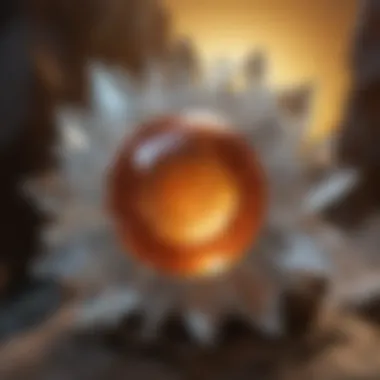

Minimizing Damage to Crystals During the Gluing Process
Gentle Handling Techniques for Fragile Crystals
Exploring gentle handling techniques for fragile crystals is paramount in our guide. This aspect contributes significantly to our overarching objective of preserving crystal luster and integrity throughout the bonding process. The key characteristic of these techniques is their delicate approach to handling fragile specimens, minimizing the risk of damage or fractures. By adopting gentle handling practices, collectors can safeguard the pristine condition of their crystals, showcasing them in their full splendor without compromise. The unique feature of these techniques is their attentiveness to detail, ensuring that each crystal is treated with the care and respect it deserves during the gluing process.
Protecting Crystal Luster and Integrity
Discussing methods to protect crystal luster and integrity is crucial in our exploration. This aspect contributes significantly to the overall goal of maintaining the visual appeal and quality of crystals post-bonding. The key characteristic of these protective measures is their ability to shield crystals from potential damage or deterioration, preserving their natural beauty over time. By prioritizing crystal luster and integrity, collectors can showcase their specimens in optimal condition, highlighting their unique features and textures with clarity. The unique feature of these protection methods is their capacity to enhance the longevity and vibrancy of crystals, allowing collectors to enjoy their geological treasures for years to come.
Exploring Advanced Techniques for Crystal Bonding and Presentation
Innovative Approaches to Creating Crystal Compositions
Layering Crystals for Dimensional Effects
Layering crystals for dimensional effects is a technique that adds depth and complexity to crystal compositions. This method enables collectors to showcase crystals in a way that highlights their unique shapes and colors, creating a visually dynamic presentation. The key characteristic of layering crystals is the ability to create multi-dimensional arrangements that captivate viewers and enhance the overall aesthetic appeal of the display. This technique is a popular choice for collectors looking to craft visually striking exhibits that demonstrate a keen eye for design and composition.
Utilizing Transparent Adhesives for Invisible Bonds
Utilizing transparent adhesives for invisible bonds is a sophisticated approach that allows crystals to appear suspended in air, giving the impression of weightlessness and ethereal beauty. The key characteristic of transparent adhesives is their ability to create seamless bonds that are virtually undetectable, ensuring that the focus remains solely on the crystals themselves. This technique is a beneficial choice for collectors seeking a minimalist and elegant display solution that accentuates the natural splendor of the crystals. While transparent adhesives offer the advantage of creating seamless presentations, careful application is essential to avoid any visible residue that may detract from the overall charm of the display.
Enhancing Crystal Displays with Creative Mounting Solutions
In the realm of rock and fossil collecting, enhancing crystal displays with creative mounting solutions is a captivating endeavor that allows collectors to showcase their specimens in innovative and visually engaging ways. By incorporating creative mounting solutions, collectors can transform ordinary displays into extraordinary works of art that command attention and admiration.
Floating Crystals for Dramatic Showcase
Floating crystals for a dramatic showcase involves suspending crystals in a transparent medium to give the illusion of floating in space. This technique creates a sense of wonder and intrigue, drawing viewers closer to marvel at the captivating sight before them. The key characteristic of floating crystals is the ability to create an immersive experience that blurs the boundaries between reality and fantasy, offering a truly mesmerizing display. This method is a popular choice for collectors aiming to evoke a sense of awe and wonder in their audience.
Integrating Lighting Effects for Stunning Presentations
Integrating lighting effects for stunning presentations adds an element of drama and sophistication to crystal displays. By strategically placing lights to highlight specific features or create dynamic shadows, collectors can enhance the visual impact of their exhibits and evoke different moods and atmospheres. The key characteristic of integrating lighting effects is the ability to manipulate the interplay of light and shadow to accentuate the natural beauty of the crystals, creating a mesmerizing visual spectacle. This technique is a beneficial choice for collectors looking to infuse their displays with an extra layer of drama and allure, elevating the overall presentation to a higher level of artistic expression.
Collaborating with Crystal Artisans for Custom Display Projects
Collaborating with crystal artisans for custom display projects opens up a world of possibilities for collectors seeking one-of-a-kind showcase pieces that reflect their unique vision and style. By engaging with skilled artisans, collectors can bring their dream display projects to life, leveraging the expertise and creativity of these professionals to create bespoke crystal exhibits that stand out in both craftsmanship and design.
Engaging Artisans for Bespoke Crystal Art Installations
Engaging artisans for bespoke crystal art installations allows collectors to access specialized knowledge and craftsmanship, ensuring the creation of museum-quality displays that are truly exceptional. The key characteristic of this collaboration is the opportunity to work closely with artisans to design and execute custom display solutions that align with the collector's aesthetic preferences and display requirements. This personalized approach is a beneficial choice for collectors seeking tailored presentation options that reflect their individual taste and appreciation for fine craftsmanship.
Commissioning Unique Crystal Display Pieces
Commissioning unique crystal display pieces offers collectors the chance to own exclusive works of art that are tailored to their specific needs and preferences. By commissioning custom pieces, collectors can explore innovative design concepts and integrate personal touches that make their displays truly one-of-a-kind. The unique feature of commissioning custom display pieces is the ability to co-create with artisans, influencing every aspect of the design process to ensure the final product exceeds expectations. While commissioning unique display pieces provides the advantage of owning a bespoke creation, collectors must consider the time and cost implications of such projects to ensure a mutually fulfilling collaboration that results in a remarkable and enduring display.
